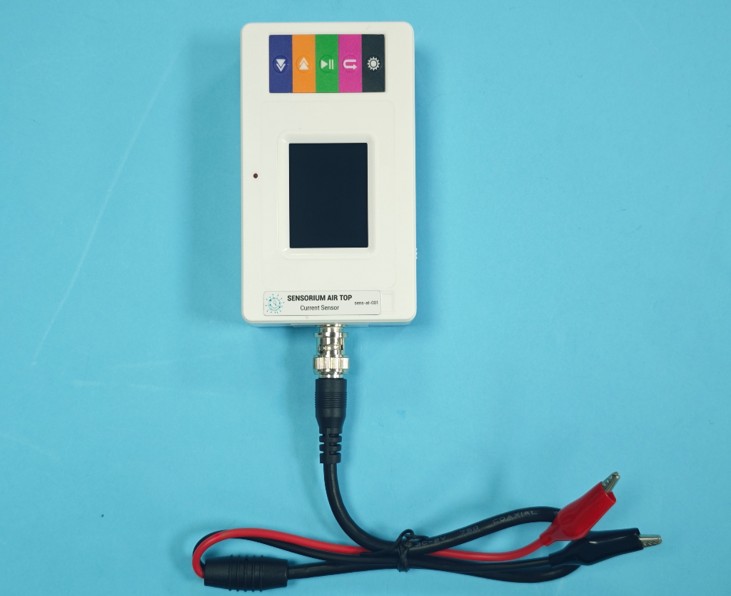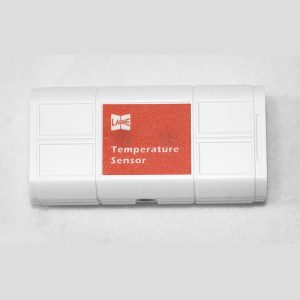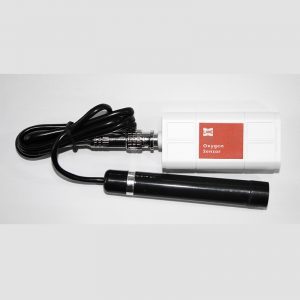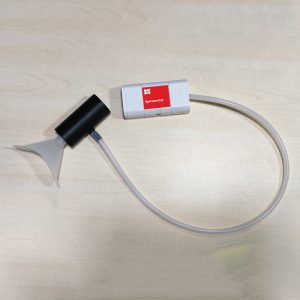
Wireless voltage sensor
August 1, 2025
Wireless Thermocouple Sensor
August 1, 2025Wireless current sensor
Range: -3A to +3A
Resolution: 0.01A
I. Working Principle
A sensitive sampling resistor is used to collect the current flowing through the current sensor, converting the current signal into a voltage signal, which is then amplified to output a standard signal.
II. Specifications
Range: -3A to +3A
Resolution: 0.01A
III. Structure (Broussonetia papyrifera) and Features
1. Equipped with a 1.8-inch color LCD screen.
2. Configured with 5 functional buttons for simple and convenient operation.
3. Supports high-speed USB data transfer for fast communication with data acquisition devices.
4. Supports wireless communication with experimental terminals.
5. Built-in large-capacity removable battery.
6. Features a sensor interface with snap fasteners, compatible with standard sensors for combined experiments.
7. Includes mounting holes for fixation on iron stands, enabling integration with traditional equipment.
8. The sensor supports iOS, Android, and Windows systems.
IV. Typical Applications
This current sensor is used to measure the current at any point in a circuit. Typical applications include:
– Properties of series and parallel circuits.
– Measuring the electromotive force and internal resistance of batteries.
– Current-voltage characteristics of small bulbs.
– Ohm’s Law experiments.
V. Note
This product is suitable for educational purposes only and is not intended for industrial, medical, research, or commercial applications.
VI. Usage Tips
1. The usage method is similar to that of an ammeter. The current sensor must be connected in series in the circuit. If the measured current flows in through the red wire and out through the black wire, the displayed value will be positive. If connected in reverse, the displayed value will be negative.
2. The measured current must not exceed the sensor’s range, as this may damage the sensor.





Reviews
There are no reviews yet.